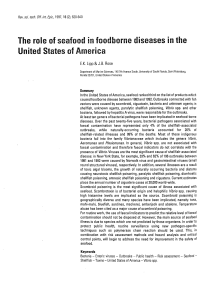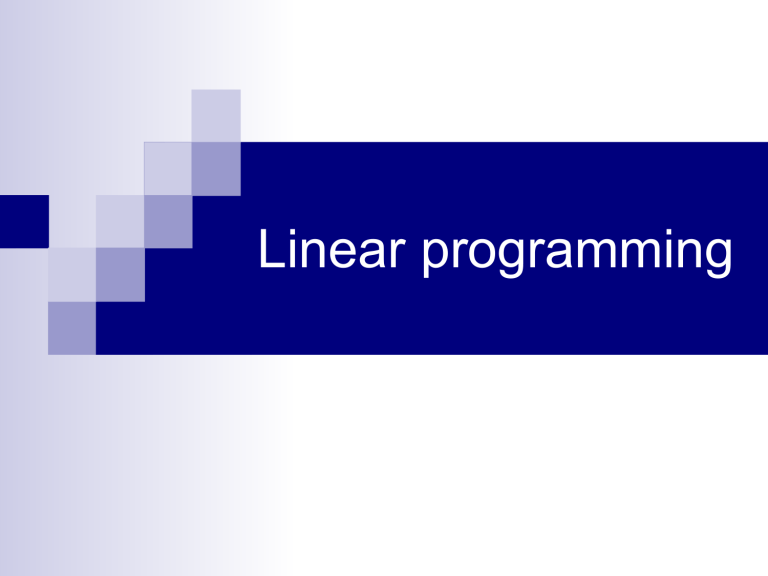
Linear programming Introduction The Linear Programming (LP) has proven that it is a very powerful method in the search for solutions to problems arising from various areas, The application of linear programming is extremely broad. It is applied in industry, trade, finance, agriculture, marketing, public service, etc. The PL consists of two main parts: Formulate the problem that concerns us, Solving this problem. 2 Introduction The following table shows some examples of actual use of Operations Research by different organizations and profits and / or savings achieved as a result by applying Linear Programming: Organization Application Dutch Ministry of Infrastructure and National Water management policy the Environment (Netherlands development, adding new facilities, Rijkswaterstaat) operating and costs procedures Year Yearly savings 1985 $15 millions Monsanto Corp. Production's operations optimization to obey goals with a minimum cost 1985 $2 millions Weyerhaeuser Co. Cutting trees optimization to maximize wood products production 1986 $15 millions Electrobras/CEPAL Brasil Optimal allocation of hydraulic and thermic resources in the national energy 1986 generation system $43 millions United Airlines Shifts at book offices and airports scheduling to accomplish with the customer needs at minimal cost $6 millions 1986 3 Introduction CITGO Petroleum Corp. Optimization of refinement, offer, distribution and commercialization of products operations 1987 $70 millions Santos, Ltd., Australia Capital investment optimizing to produce natural gas along 25 years in Australia 1987 $3 millions 1989 $59 millions San Francisco Police Department Optimization programming and assignment of Patrol's 1989 officers with a computed system $11 millions Texaco Inc. Optimizing the mixing of ingredients available in order to obtain fuels which met with the quality requirements 1989 and sales $30 millions Integration of a national network of spare parts inventory to improve support service $20 millions + $250 millions in minor inventory Administration of oil and coal inventories for the Electric Power Research electric service with the intention of balancing Institute inventory costs and risks of remaining IBM 1990 4 Introduction U.S. Military Airlift Command Rapidity in the airplanes, crew, load and passengers coordination to drive the evacuation 1992 by air in the "Desert Storm" project in the Middle Orient Victory American Airlines Design of a pricing, overbooking and flight coordination structure system to enhance benefits 1992 $500 millions of additional revenue Yellow Freight System, Inc. Optimizing the design of the national transport network and the scheduling of shipping routes in 1992 the U.S. $17.3 millions New Haven Health Dept. Design of an effective program of needles change to combat the AIDS contagion 1993 33% less of contagions AT&T Development of a computer system to design call centers to guide customers 1993 $750 millions 5 Introduction Delta Airlines Maximizing profits from the allocation of aircraft types in 2.500 national flights in the U.S. 1994 $100 millions Restructuring of the whole supply chain among Digital Equipment Corp. suppliers, plants, distribution centers, potential sites 1995 and market areas $800 millions Selection and optimum programming of mass projects to obey with future energy needs of the country 1995 $425 millions Optimal restructuring of the size and form of the South African National South African National Defence Force and his Defence Force (SANDF) weapons system 1997 $1.100 millions China Procter & Gamble Redesign of the North American production and distribution system to reduce costs and to improve 1997 the incoming rapidity to the market $200 millions Taco Bell Optimum employees programming to provide the service to desired clients with a minimum cost 1998 $13 millions Hewlett-Packard Redesign of security inventories' size and location at printer production line to obey the production goals 1998 $280 millions of additional revenue 6 Introduction General processes used to formulate each problem are: Determine the essential elements constituting the treaty system (such as capital, labor, materials, ...), Set the goal (profit maximization or cost minimization), Represent the problem mathematically (put the problem in mathematical form) to find the optimal solution. 7 Introduction Formulation or modeling: Some advice Using a set of mathematical relationships to reflect as accurately as possible a real situation Compromise between the fit with the reality and easy to solve the model 8 Mathematical model Three entities to identify i) ii) iii) all actions (activities) available to the decision maker (variables) the objective is expressed as a (objective function) mathematical function Constraints defining the nature of the system under study expressed in terms of mathematics (constraints) relationship 9 Resolution Three entities to identify i) all actions (activities) available to the decision maker (variables) the objective is expressed as a (objective function) mathematical function Constraints defining the nature of the system under study expressed in terms of mathematics (constraints) relationship ii) iii) Model resolution Using a procedure (algorithm) method to determine 1. variable values representing the amplitude of the use of various actions 2. to optimize the economic function (reach the goal) 3. within the constraints imposed 10 Linear model Three specific properties : 1. Additivity of variables: the global effect of actions (variables) is equal to the sum of the particular effects of each action (variables). There is therefore no cross effect of actions (independent variables) 2. The variables are always non-negative values 3. The order of power is equal to one for each variable 11 Example: Problem of diet 3 types of grain available to feed the flock : g1, g2, g3 Each kg of grain contains 4 nutrients : ENA, ENB, ENC, END Weekly required quantity of each nutrient is specified The price per kg of each type of grain is specified. Problem: Determine the quantity of each grain (kg) used to establish a diet at minimum cost respecting the required quantity of each nutrient 12 Given of Problem quantity 3 types of grain available to feed the flock : g1, g2, g3 Each kg of grain contains 4 nutrients : ENA, ENB, ENC, END Weekly required quantity of each nutrient is specified The price per kg of each type of grain is specified. Problem: Determine the quantity of each grain (kg) used to establish a diet at minimum cost respecting the required quantity of each nutrient g1 g2 g3 Weekly 1250 250 900 232.5 ENA ENB ENC END 2 3 1 1 5 3 0.6 0.25 7 0 0 1 $/kg 41 96 35 13 Variables of problem 3 types of grain available to feed the flock : g1, g2, g3 Each kg of grain contains 4 nutrients : ENA, ENB, ENC, END Weekly required quantity of each nutrient is specified The price per kg of each type of grain is specified. Entities of model variables i) Actions # kg of g1 x1 # kg of g2 x2 # kg of g3 x3 Problem: Determine the quantity of each grain (kg) used to establish a diet at minimum cost respecting the required quantity of each nutrient 14 Economic Function and constraints Weekly quantity ii) Economic Function Cost of diet per week = 41x1 + 35x2 + 96x3 To minimize ENA ENB ENC END iii) Constraints ENA: ENB: ENC: END: 2x1 + 3x2 +7x3 1x1 + 1x2 5x1 + 3x2 0.6x1 + 0.25x2 + x3 ≥ 1250 ≥ 250 ≥ 900 ≥ 232.5 $/kg g1 g2 2 3 1 1 5 3 0.6 0.25 41 35 g3 7 0 0 1 1250 250 900 232.5 96 No negativity of variables : x1 ≥ 0, x2 ≥ 0, x3 ≥ 0 15 Mathematical model min z = 41x1 + 35x2 + 96x3 With Constraints: 2x1 + 3x2 +7x3 ≥ 1250 1x1 + 1x2 ≥ 250 5x1 + 3x2 ≥ 900 0.6x1 + 0.25x2 + x3 ≥ 232.5 x1 ≥ 0, x2 ≥ 0, x3 ≥ 0 16 Problem of restorer Availability of restorer: 30 urchins 24 shrimp 18 oysters Two types of seafood dishes offered by the restaurant : first type is composed from 5 urchins, 2 shrimp and one oyster with profit 8 $, Second type is composed from 3 urchins, 3 shrimp and 3 oysters with profit 6 $ Problem: determine the number of plates of each type to provide for the restorer maximizes its income in accordance with the availability of seafood 17 Variables of problem Availability of restorer: 30 urchins 24 shrimp 18 oysters Two types of seafood dishes offered by the restaurant : Entities of model variables i) Actions # plates $8 x # plates $6 y first type is composed from 5 urchins, 2 shrimp and one oyster with profit 8 $, Second type is composed from 3 urchins, 3 shrimp and 3 oysters with profit 6 $ Problem: determine the number of plates of each type to provide for the restorer maximizes its income in accordance with the availability of seafood 18 Economic function and constraints Availability of restorer: 30 urchins 24 shrimp 18 oysters Two types of seafood dishes offered by the restaurant : first type is composed from 5 urchins, 2 shrimp and one oyster with profit 8 $, Second type is composed from 3 urchins, 3 shrimp and 3 oysters with profit 6 $ Problem: determine the number of plates of each type to provide for the restorer maximizes its income in accordance with the availability of seafood Entities of model ii) Economic Function restorer income = 8x + 6y To maximize iii) Constraints urchins : 5x + 3y ≤ 30 shrimp : 2x + 3y ≤ 24 oysters : 1x + 3y ≤ 18 non-negativity of variables: x,y≥0 19 Mathematical model max 8x + 6y With constraints: 5x + 3y ≤ 30 2x + 3y ≤ 24 1x + 3y ≤ 18 x,y≥0 20 Exercise Sam wants to invest $ 5,000 next year in the two types of investment: A and B. The investment brings in A 5% while the investment B earns him 8%. A study of market suggests that it must invest at least 25% in A and at most 50% in B. In addition, the amount of investment in A must be at least half the amount of investment in B. Establish a Model of this problem as a linear program. 21 Exercise A bank plans its operations for the next year. the bank provides three types of loans whose rates of return are the following: loans rates of return personal 14% household 10% Auto (car) 12% the policy of the bank imposes certain restrictions on the distribution of amounts in the different categories. Personal loans should not exceed 25% of budget of the bank while the personal and household loans should not exceed 45% of the budget. The amount allocated to auto loans should not exceed 70% of the budget but should represent at least 80% of the amount allocated personal and household loans. The bank has a budget of $ 500,000 to be divided into different categories. Write a linear program to maximize returns of this bank. 22 Exercise Top Toys prepares new advertising campaign on radio and TV. Each radio advertising costs him $ 300, each television advertising costs him $ 2,000. Top Toys has a budget of $ 20,000 for his campaign. However, to ensure that there is at least one radio and one TV commercial advertising, it was decided that no more than 80% of the total budget can be allocated to each type of media. A study predicts that the first radio advertising will be followed by 5000 listeners, and only 2,000 listeners for the following. The same study states that the first commercial TV viewers will be followed by 4500, and 3000 only for the following viewers. Write a linear program for the company's Top Toys. 23 Resolution Graphic Method Methods for problem with only two variables Back to the problem of the restorer max z = 8x + 6y With following Constraints: 5x + 3y ≤ 30 2x + 3y ≤ 24 1x + 3y ≤ 18 x, y ≥0 24 Domain of possible solutions Let us draw the straight line that has the following equation: 5x + 3y = 30 The set of points that satisfy the constraint 5x + 3y ≤ 30 are under this line because all points satisfy this relationship 25 Domain of possible solutions Let us draw the straight line that has the following equation: 2x + 3y = 24 The set of points that satisfy the constraint 2x + 3y ≤ 24 are under this line because all points satisfy this relationship 26 Domain of possible solutions Now Let us draw the straight line that has the following equation: 1x + 3y = 18 The set of points that satisfy the constraint 1x + 3y ≤ 18 are under this line because all points satisfy this relationship 27 Domain of possible solutions The set of points that satisfy all constraints: 5x + 3y ≤ 30 2x + 3y ≤ 24 1x + 3y ≤ 18 x,y≥0 28 Optimal solution Consider the economic function : z = 8x + 6y. More we move away from the origin, Mor the value increases : x = 0 et y = 0 => z = 0 29 Optimal solution Consider the economic function : z = 8x + 6y. More we move away from the origin, Mor the value increases : x = 0 et y = 0 => z = 0 x = 0 et y = 6 => z = 36 30 Optimal solution Consider the economic function : z = 8x + 6y. More we move away from the origin, Mor the value increases : x = 0 et y = 0 => z = 0 x = 0 et y = 6 => z = 36 x = 6 et y = 0 => z = 48 31 Optimal solution Consider the economic function : z = 8x + 6y. More we move away from the origin, Mor the value increases : x = 0 et y = 0 => z = 0 x = 0 et y = 6 => z = 36 x = 6 et y = 0 => z = 48 x = 3 et y = 5 => z = 54. Impossible to go further without leaving the possible domain. Optimal Solution : x = 3 et y = 5 Optimal Value : z = 54 32 Another Example A company wants to make two different kinds of drinks. The technical characteristics of the production and the placing of labels for each 12 bottles are given in the following table : Type of drink production Labeling 12 bottles of A 2 hours 1 hour 12 bottles of B 3 hours 4 hours 33 Another Example The company makes a profit of $ 10 on a dozen bottles of A and $ 20 on a dozen bottles of B. Given that the Department of production has 20 hours available and the department of labeling has 15 hours available , Find the number of dozens of drink A and B that the company needs to do for maximize its profit. 34 Solution Mathematical model : 2x1 + 3x2 20 x1 + 4x2 15 x1, x2 0 x1 = 7, x2 = 2 Z = 110 Max Z = 10x1 + 20x2 Method 1: the straight line of Z must be moved in parallel direction of itself to farthest point of the polygon for the maximum value 35 Solution Mathematical model : 2x1 + 3x2 20 x1 + 4x2 15 x1, x2 0 x1 = 7, x2 = 2 Z = 110 Max Z = 10x1 + 20x2 2nd Method: Calculate the corners of the polygon and put their values in Z to find the maximum value 36 Exercise A customer asks a company to manufacture monthly her products for two types A and B. This client is able to pay the following prizes:: 138$ per set of 100 pieces of A, 136$ per set of 100 pieces of B. The Manufacture of A requires their passage through three workshops: 37 Exercise number of hours required for the production of a series of 100 pieces of A number of hours required for the production of a series of 100 pieces of B Cost/hour of work Workshop 1 2 1 10$ Workshop 2 1 4.5 12$ Workshop 3 4 3 14$ However, the company has a limited number of hours in each workshop as it has: 200 hours for Workshop 1 540 hours for Workshop 2 480 hours for the workshop 3 38 Exercise What are the quantities to make A and B within the time limit required and the resources of the company; all seeking to maximize profit? Give a graphical solution. 39 Type of solutions In general we can identify three types of solutions in the linear programming: A unique optimal solution, No optimal solution, A set of optimal solutions 40 Type of solutions Example: no optimal solution Min Z = x + 2y With constraints: x+y1 x2 x, y 0 41 Type of solutions Example: A set of optimal solutions Max Z = x + y With constraints: x + 3y 18 x+y8 2x + y 14 x, y 0 42 Linear programming in three variables The space geometry is used to solve LP problems with three variables. For example: x1 1000 x2 500 x3 1500 3x1 + 6x2 + 2x3 6750 x1, x2, x3 0 Max z = 4x1 + 12x2 + 3x3 43 Difficulties of generalization The geometric solution can not of course extend to the case of a number greater than three variables. For this reason we need methods that are able to solve LP problems with n variables of activities such that n> 3. There is a method called a simplex algorithm to resolve this kind of problems. 44


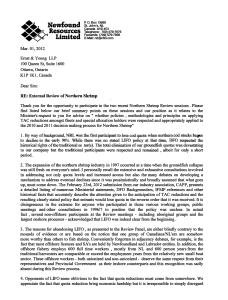
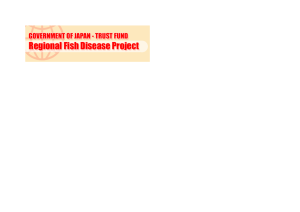
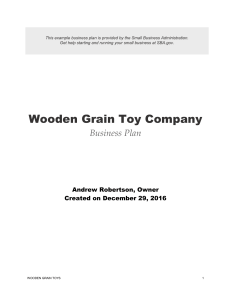
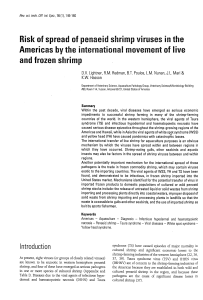

![[Josh-Kaufman]-The-Personal-MBA -Master-the-Art-of(z-lib.org).epub](http://s1.studylibfr.com/store/data/010066436_1-e3fed85cab0ed78272cd3e7e81e6feb1-300x300.png)
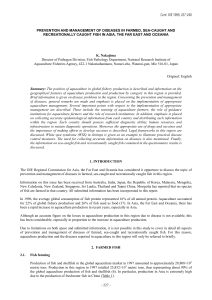
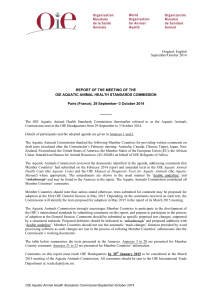
![[eprint.iacr.org]](http://s1.studylibfr.com/store/data/008940715_1-ab1d71fe92c07f6b2e5b8359bdfddb47-300x300.png)
